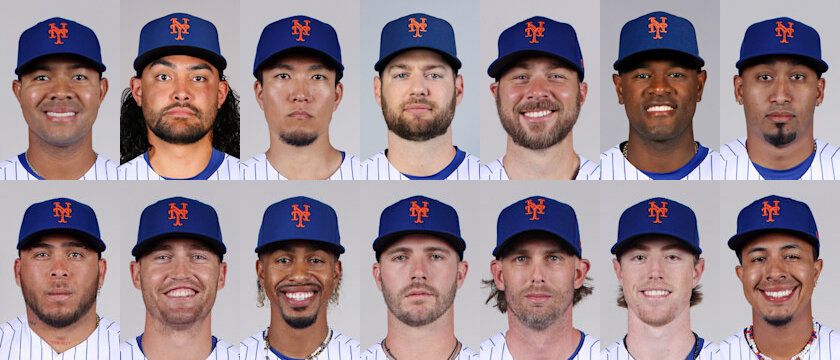You almost have to feel bad for the Mets’ pitchers who have to follow Matt Harvey these days. With the legend of Harvey nearly growing to ‘perfect’ proportions, the rest of the staff (sans Jonathon Niese) have to be suffering from an inferiority complex. So far on the season, Shaun Marcum, Dillon Gee and Jeremy [...]
In his last start of 2012, Dillon Gee allowed 1 ER in 8 IP and picked up the win, as the Mets improved to 46-39. For the rest of the year without Gee, the club was 28-49, meaning either that Gee picked a fortuitous time to get hurt or that his loss was a bigger [...]
So far in 2012, National League starting pitchers have a 3.98 ERA. Dillon Gee has a 4.42 ERA, almost exactly identical to last year’s 4.43 mark. Coming into the season, I thought Gee was the weak link in the rotation and someone from whom the Mets needed to upgrade. But despite the similarities in results [...]
One night after Miguel Batista made the Brewers look impotent, the same team knocked around Dillon Gee pretty good, as they notched 7 ER in 5.1 IP against the interjection (h/t Doug Parker). In his last two starts, Gee has allowed 11 ER in 11 IP. For the season Gee has a 5.65 ERA in [...]
After yesterday’s win over the Marlins, it was announced that Mike Pelfrey was likely to undergo elbow surgery and miss the remainder of the season. This is really bad news for the Mets, a statement I’d never thought I would say. The Pelfrey we saw in three starts this year was doing everything he needed [...]
The Mets have reached agreement with infielder Ronny Cedeno on a one-year deal, worth just north of $1 million. The Mets had no backup shortstop on the roster so Cedeno certainly fills a need. He’s very good insurance in case Ruben Tejada regresses or if Daniel Murphy gets injured again. Cedeno is not much with [...]
If you ask most Mets fans if they are more worried about the hitting or the pitching for the 2012 team, they’ll say the pitching. And now that the Winter Meetings are over, if you ask fans if they’re more worried about the starters or the relievers, the answer will likely be the starters. So [...]
Eight pitchers for the Mets have thrown at least 20 innings in both 2010 and 2011. Here are their ERAs for those two seasons: Name 2011 2010 R.A. Dickey 3.77 2.84 Jonathon Niese 4.05 4.20 Mike Pelfrey 4.58 3.66 Dillon Gee 3.92 2.18 Francisco Rodriguez 3.16 2.20 Bobby Parnell 4.20 2.83 Manny Acosta 4.00 2.95 [...]
When they write the epitaph for the 2011 Mets, it will be about the team that overachieved despite the many obstacles placed in its way. And there’s no doubt that is a large part of the story and an angle that should not be overlooked. But we should also remember what went right. And in [...]
Entering the 2011 season one of the biggest question marks was how the Mets’ SP were going to do with Johan Santana on the shelf. Would the team be able to handle not having an ace? There were other concerns about the starters, too. Could Chris Capuano and Chris Young stay healthy and regain their [...]
With Johan Santana starting the season on the disabled list, the Mets were left without an ace. By default, Mike Pelfrey assumed the label as the team’s top starter. But Pelfrey has been the weakest pitcher on the staff so far. Now with two-thirds of the season already complete, we are still wondering who the [...]
As the Mets once again climbed back to .500 on the year after last night’s 4-0 victory over the Braves, the Mets have been winning games on the heels of some terrific starting pitching. Mets’ starters have now tossed 11 straight quality starts (sans last night’s rain-shortened start for Dillon Gee) and have gone 7-4 [...]











